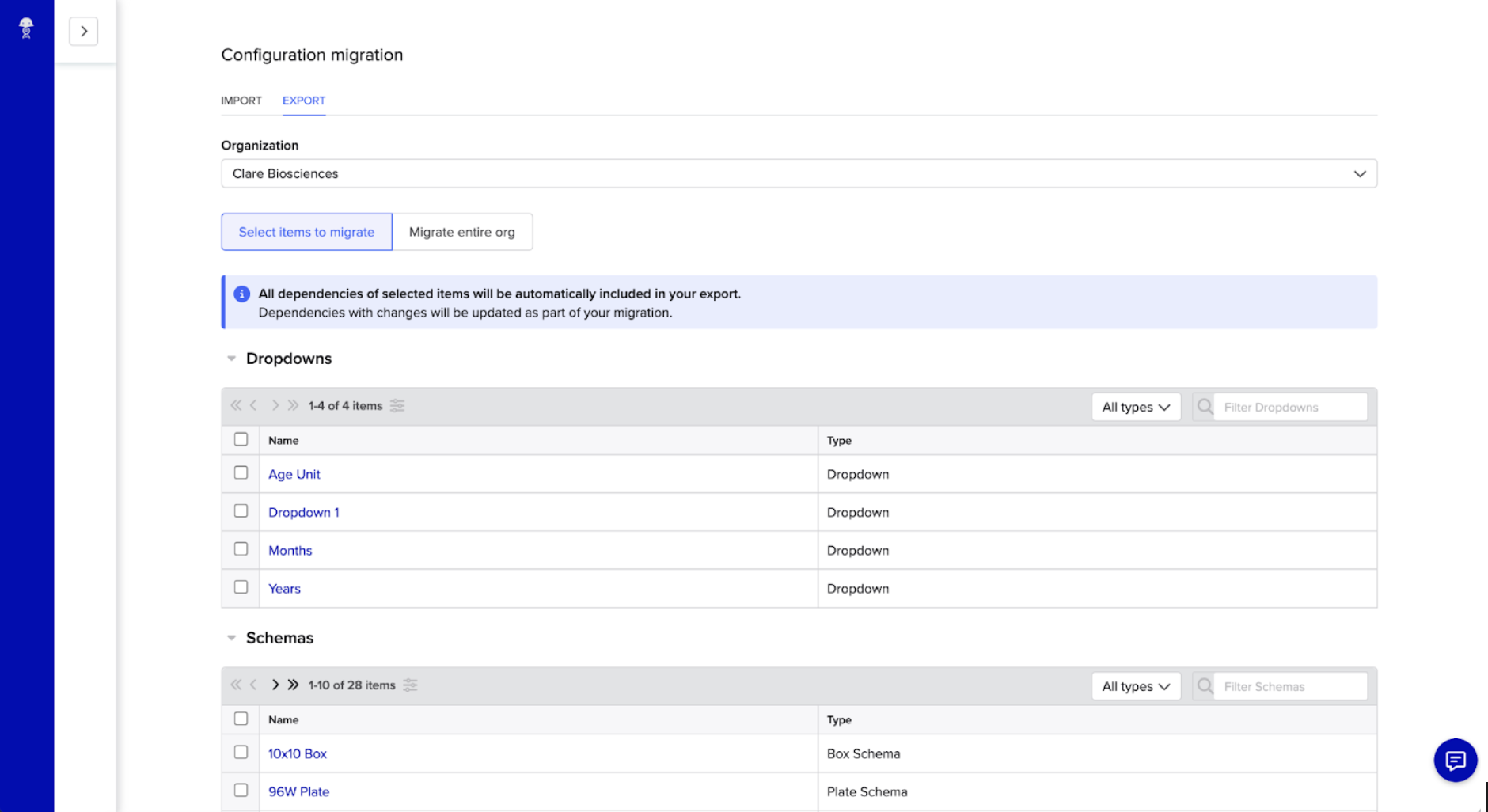Evolve Benchling with your science using Configuration Migration

Change is a constant in biotechnology. Change in scientific workflows, change in techniques, change in team ownership, and beyond. Biotech companies need to adjust their software systems to their needs. Benchling provides an easy-to-configure platform that can do just that — evolve over time with your science.
To support the varied needs of many teams within a biotech company, Benchling offers a multi-tenant solution to allow for healthy iteration of new configurations without impacting mission-critical work of any one team.
That’s why we’ve launched Configuration Migration, which allows tenant admins to systematically move configurations between Benchling tenants.
How Configuration Migration makes a multi-tenant solution more efficient
Many companies aim to establish FAIR data practices — and at Benchling we aim to help you build this foundation, even across different Benchling solutions and tenants within your company.
Each Benchling tenant serves a distinct purpose. In the simplest cases, a customer will have both a Test and Production Benchling tenant. Test is meant to be a place for trying out new configurations and confirming they are fit-to-purpose. Then, only after thorough testing, will new configurations be built into Production for use in live experiments.
By setting up the data models based on FAIR principles in one tenant, Configuration Migration allows teams to copy their work into other tenants in an automated, streamlined way.
In the context of this tool, configurations include objects like schemas, templates, and dropdowns. With Configuration Migration, a tenant admin can migrate new configurations from one tenant to another or update existing ones, depending on their needs.

A key feature of Configuration Migration is its ability to find all the dependencies of a given configuration. Anyone who has spent time setting up Benchling knows that effective data models often involve highly interconnected configurations. This means one configuration can depend on a lot of other configurations, and it can be challenging to figure out what these are. To solve this, Configuration Migration finds all the dependencies of a selected configuration for you. This allows you to quickly understand all impacted downstream configurations and can foster data harmonization conversations across collaborating teams.
Keep evolving with Benchling
Configuration Migration will help you move configurations between Benchling tenants faster. A fairly common practice among our customers is to have an internal data governance team responsible for approving proposed configuration changes. This group would be heavily involved in either approving or executing configuration migrations.
Configuration Migration should save admins time by introducing systematic migration and increasing admin confidence in configuration alignment across tenants. As biotech companies continue to move toward supporting FAIR data practices, it’s essential that the platform itself supports harmonization for how scientific data is recorded and shared.
Learn more about end-to-end data management with Benchling Connect.
Powering breakthroughs for over 1,300 biotechnology companies, from startups to Fortune 500s


